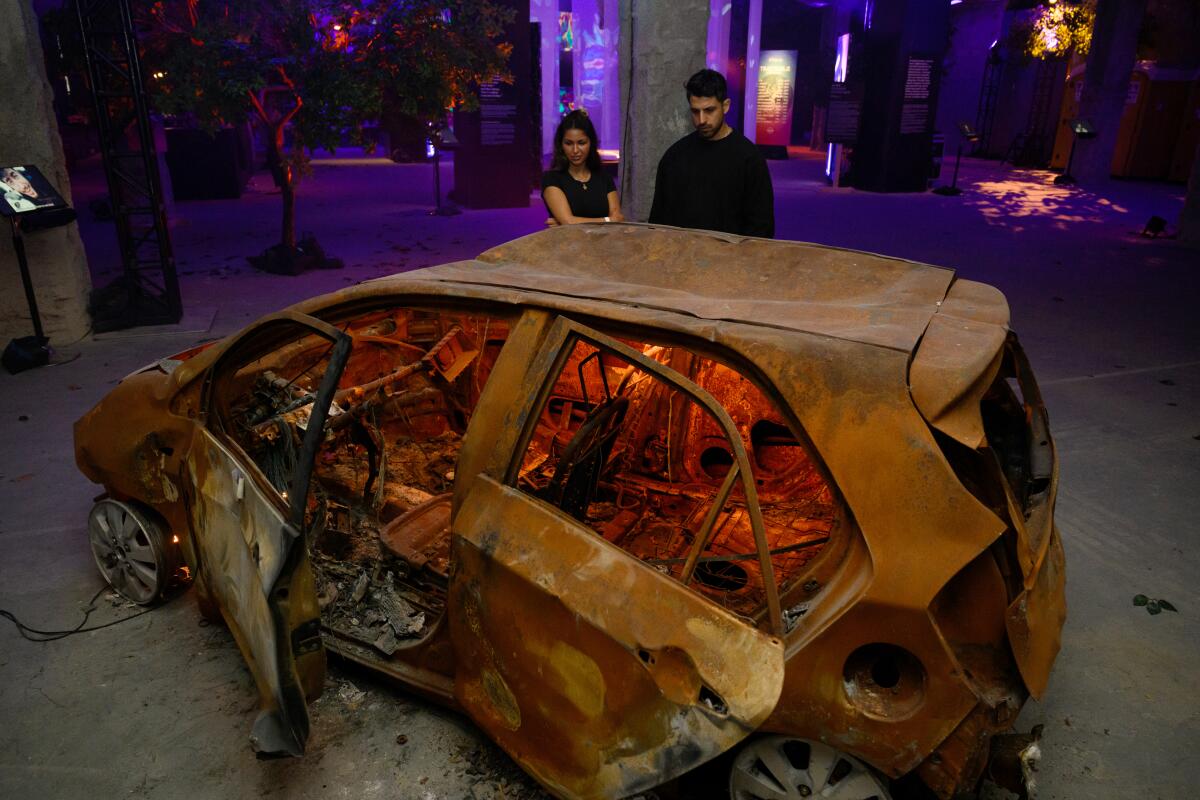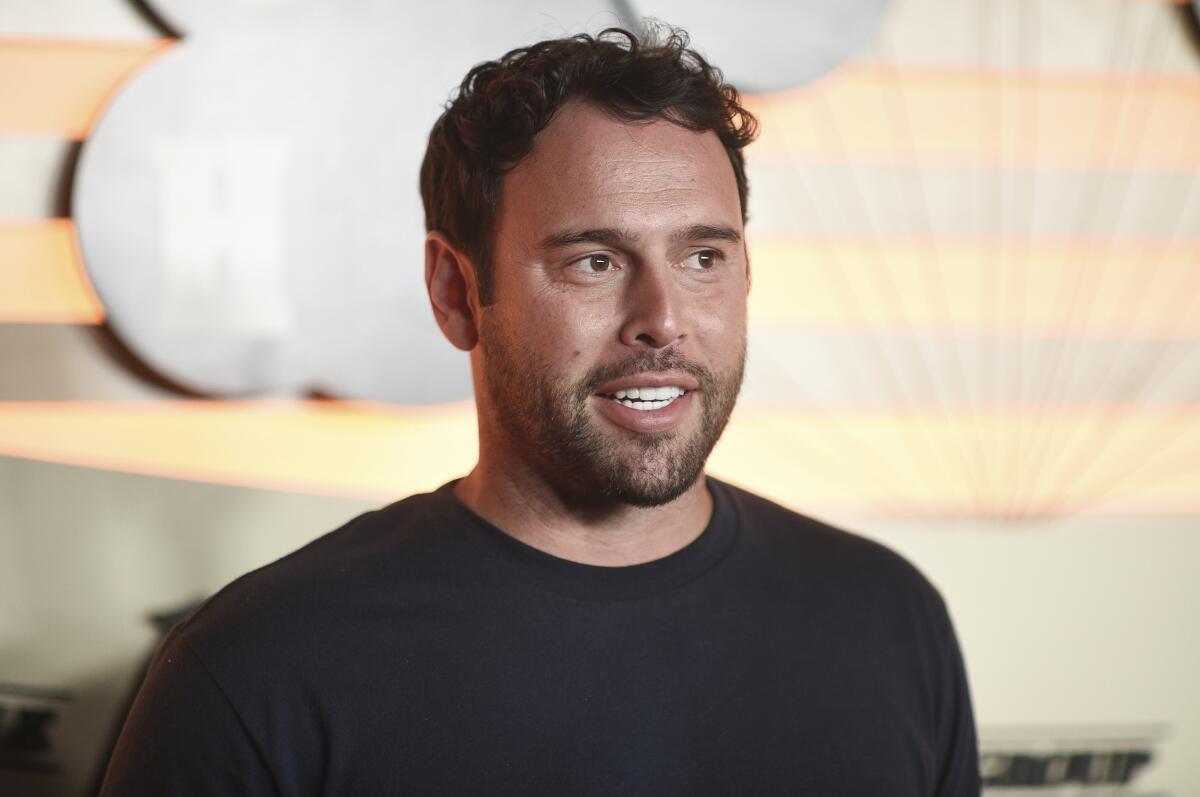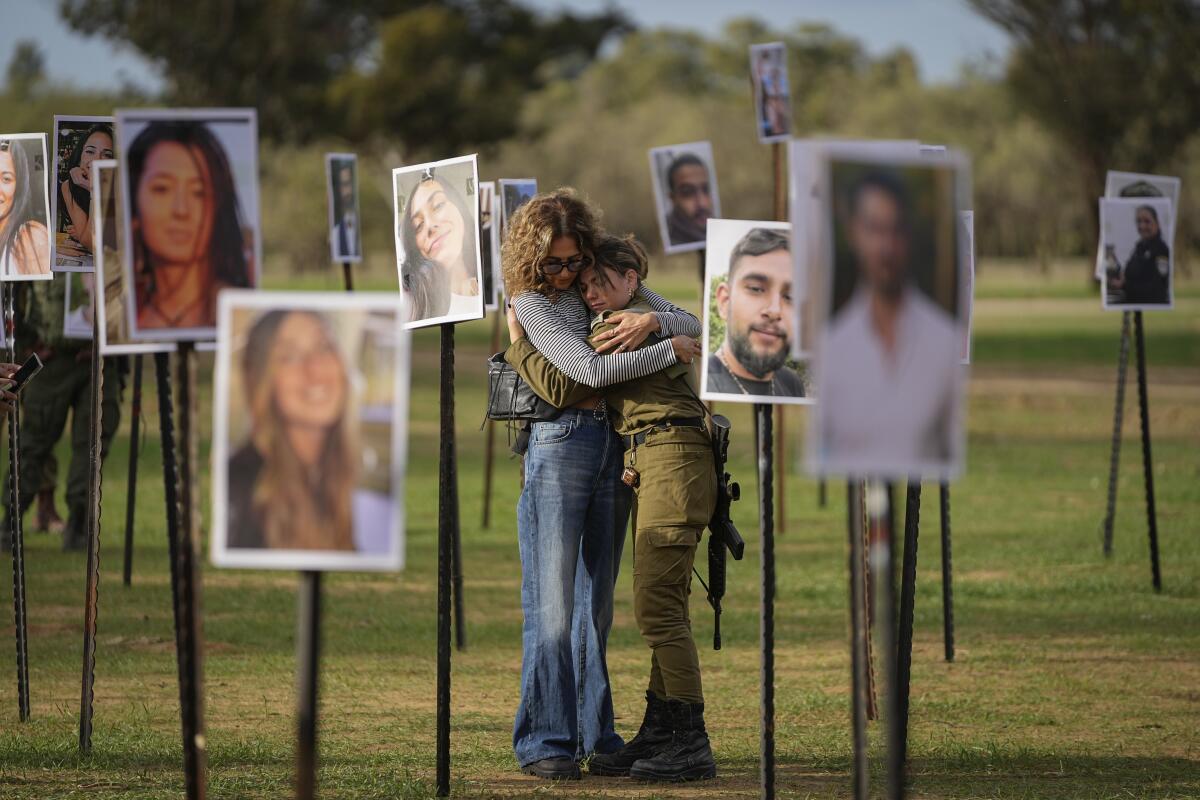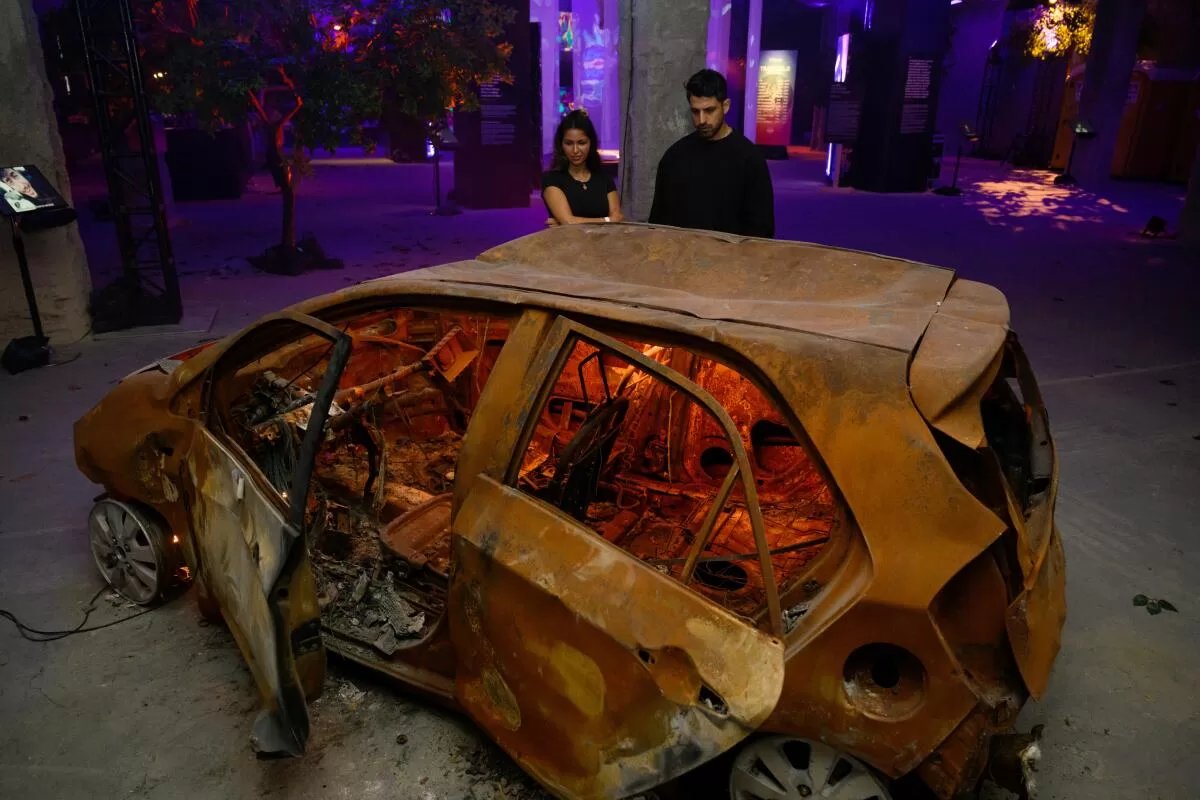In a cavernous, 50,000-square-foot industrial event space in Culver City stand the charred remnants of six cars destroyed by rocket-propelled grenade fire. There are portable toilet stalls, their doors riddled with bullet holes. There are tents, camping gear, clothes hanging on lines and tables labeled “Lost and Found” filled with rows of everyday items such as shoes, sunglasses, bags, toiletries and keys.
These and hundreds of other items — including a large canopy under which 3,000 partygoers danced — were salvaged after the Hamas-led terror attack on the Nova Music Festival in Israel on Oct. 7.
They are part of the “Nova Music Festival Exhibition: October 7th 06:29 AM — the Moment Music Stood Still,” an immersive memorial that re-creates a sense of the horrors that unfolded early that morning and its aftermath while honoring victims and survivors.
As festivalgoers danced, a barrage of rockets landed and thousands of Hamas gunmen and other insurgents from the Gaza Strip swarmed across the border into southern Israel. The attack killed about 1,200, including 405 Nova attendees, many of whom were ambushed as they attempted to escape in their cars or to hide in bomb shelters and nearby fields. More than 250 were abducted that day; 45 were festival participants — some of whom remain in captivity in Gaza.
Interspersed among the artifacts is harrowing real-time video taken by attendees — unknown to them that they were dancing in the last moments just as the onslaught began — as well as body-cam footage taken by Hamas terrorists, who then posted the contents online.

The burnt remnants of a car hit by rocket-propelled grenades were brought from Israel as part of the installation.
(Alexi Rosenfeld / Getty Images)
“I love everyone. I want to go home. I already miss everyone,” festival survivor Noa Kalash says in phone footage made while she hid during the attack.
In a heartbreaking audio exchange, Meirav Gonen tells her daughter Romi, who is shot and trying to flee, “Romily, you’re not alone. You’re with me, my beautiful one. Everything is OK.” Romi, who turns 24 on Sunday, was taken captive and remains in Gaza.
“Dad, I’m calling you from the phone of a Jew. I just killed her and her husband,” one of the terrorists says in a call broadcast on a video screen.
The exhibition is spread over several rooms and includes video testimonials of survivors, first responders and family members of those still held hostage. Portraits of those who were killed that day line three walls.
Survivors of the festival are on-site to share their experiences.
“I hope that people take out of this place the message of what happened to human beings,” said Millet Ben Haim, 28, who hid for more than six hours in bushes with her friends before being rescued.
“We’re shining a light on these atrocities not to rattle people but to ensure that it doesn’t happen again.”
Also, she said, the goal is to focus on “love, compassion and life rather than on darkness and not to let hatred change our hearts.”
Irish Israelis Emily and Laura Damti want people to know about their younger sister Kim, 22, whom they described as a beautiful, gifted student. She was killed while seeking refuge in a bomb shelter with her friend Omer Wenkert, 23, who was taken hostage in Gaza, where he remains. “She was a radiant presence of positive energy and golden curls,” Emily said.
Scooter Braun, chief executive of entertainment company Hybe America and a music manager whose clients have included Justin Bieber and Ariana Grande, was instrumental in bringing the exhibit to the U.S., as were Omri Sassi and Ofir Amir, co-founders and producers of the Nova Music Festival, creative director Reut Feingold and American partners Joe Teplow and Josh Kadden.
Braun said he was moved to act, angered at what he saw as the music industry’s silence after the massacre.
In 2017, two weeks after a suicide bomber blew himself up and killed 22 people at Grande’s concert in Manchester, England, Braun helped organize the all-star One Love Manchester benefit concert and television special, which raised nearly $3 million to help victims.
“That is what’s so frustrating to me,” he said. “We had no issue stepping forward against an ideology, the same ideology that caused this and demanding that this is not acceptable.”
Braun saw this as an opportunity to coalesce around shared values and humanity.
“I started to speak out and try to make people hear each other. I believe that we aren’t living in the Middle East, and this is a place where people of all shapes, sizes and colors come to find a new life. And I thought, ‘Why are we yelling at each other here but expecting them to have peace there?’ We need to set the example.”

Music manager Scooter Braun was instrumental in bringing the exhibition to the United States.
(Richard Shotwell / Invision / Associated Press)
In December, Braun flew to Israel. He visited Kibbutz Beeri, a community left in ruins by the Hamas-led attacks, where residents were tortured, killed or abducted. He also visited the field where the festival was held. “These people were the hippies of the country. They were peace-loving people who wanted better for everyone. And they were just massacred.”
Braun met with survivors at the Nova Healing Camp who invited him to an exhibition in Tel Aviv. It was a small re-creation of the festival set up in a hangar.
“It was simply a place for people to go and think of their loved ones and everyone who had been affected,” he said.
“When I saw it, I immediately thought to myself, ‘This is what I’ve been looking for to help tell this story because I just want to show people each other’s humanity.’ I think we all love music. So this is a way to show people, step out of the politics and realize what happened here.”
Although the organizers insist the exhibit is neither political theater nor agitprop, it was met with anti-Israel demonstrations in New York in June. Protesters lighted flares, waved banners and shouted slogans such as “Long live the Intifada,” “Israel go to hell” and “The Zionists are not Jews and not humans,” according to videos posted on social media and news reports.
The Oct. 7 attack set off Israel’s campaign in Gaza aimed at destroying Hamas. The death toll among Palestinians has risen to nearly 40,000, according to the health ministry there, whose numbers do not demarcate between civilians and combatants. Much of Gaza’s 2.3-million population has been displaced and large parts of its cities have been reduced to rubble.
Nerdeen Kiswani, a pro-Palestinian activist, called the exhibition “propganda used to justify the genocide in Palestine” on her X account and wrote that the Nova festival was “a rave next to a concentration camp.”
The protest at the exhibition elicited a flood of denunciations, including from the White House, Sen. Chuck Schumer (D-N.Y.) and New York Atty. Gen. Letitia James. U.S. Rep. Alexandria Ocasio-Cortez (D-N.Y.) called the protest “atrocious antisemitism — plain and simple.”
Braun responded to the demonstration by extending the exhibition an additional week.
More than 100,000 people attended the exhibit during its New York run, including Mayor Eric Adams and Gov. Kathy Hochul.
Of the protests, Braun says, “I think free speech was designed to create a dialogue between us. If someone is conscious and they want to protest, then I challenge them to be considerate enough to walk through the exhibit and give it the respect it deserves and maybe see a different point of view. I want everyone to see this. I want everyone to realize that we need to start seeing each other’s humanity and realizing music must be a safe place and see ourselves in this festival.”

Photos of festivalgoers killed and taken captive by Hamas-led militants during their attack on Israel last year populate the field where the Nova festival was held.
(Ohad Zwigenberg / Associated Press)
The exhibition is expected to be in L.A. through mid-October. Braun said organizers will commemorate the anniversary of the attacks on Oct. 7. During the exhibit’s run, educational events are planned with a focus on outreach to different communities in Los Angeles.
The organizers said they hope to bring the exhibition to other locations, including Miami, Toronto and Washington, D.C.
In the final room of the exhibit, a neon sign reads, “We will dance again.”
“That is not just for us,” Braun said. “That is for all people. We want to dance with all people. And I think that that message is what needs to be heard in these times.”
The Nova exhibition opens to the public Saturday. The privately funded exhibit is selling tickets for $8, $18, $36, $72 or $180, and students can attend free of charge; all proceeds go to the Tribe of Nova Foundation, an Israeli nonprofit and an IRS-approved U.S. public charity initiative, earmarked for medical and mental health treatment and other support projects for victims and families of the Oct. 7 attacks.
